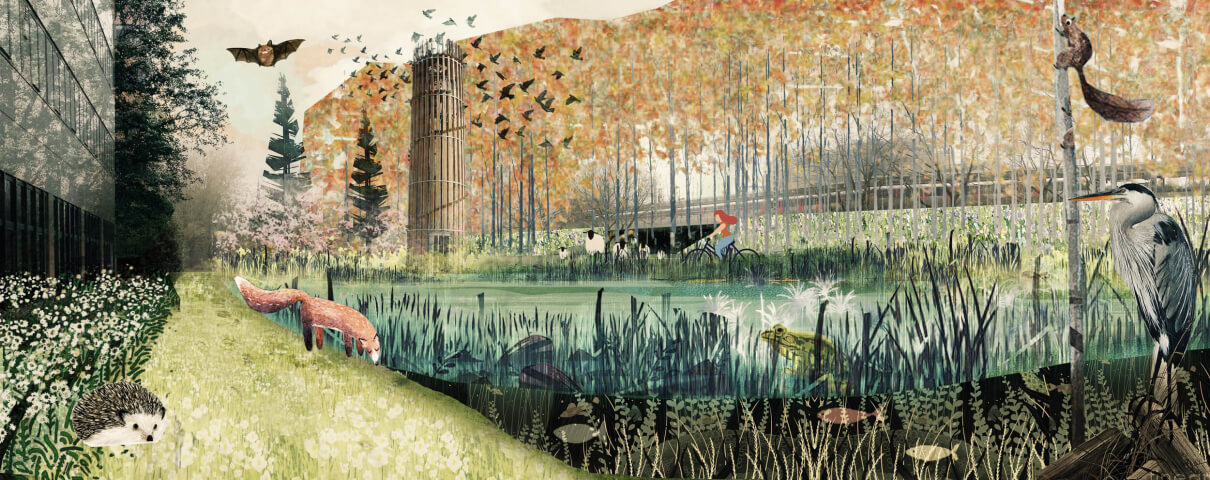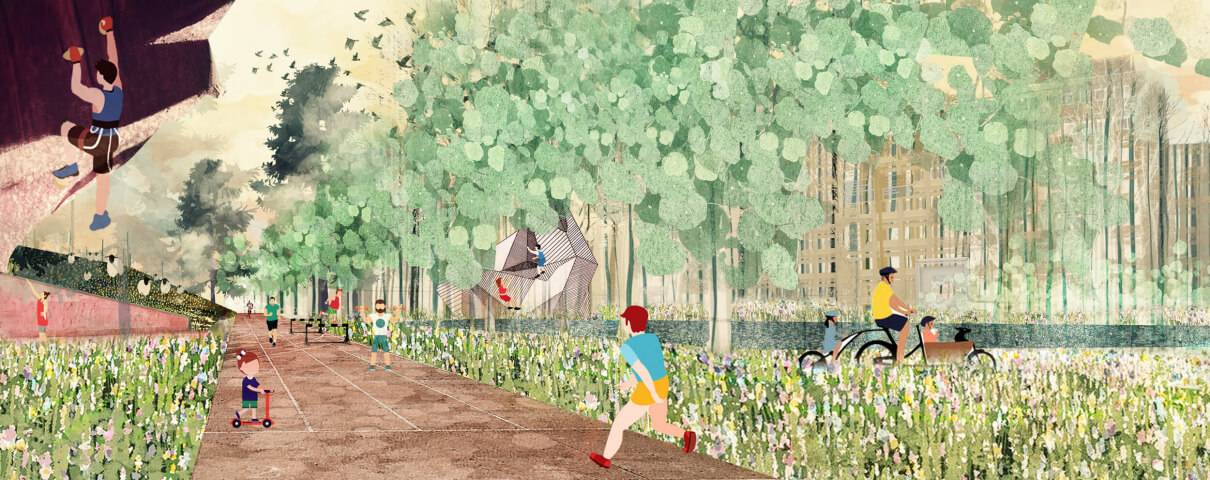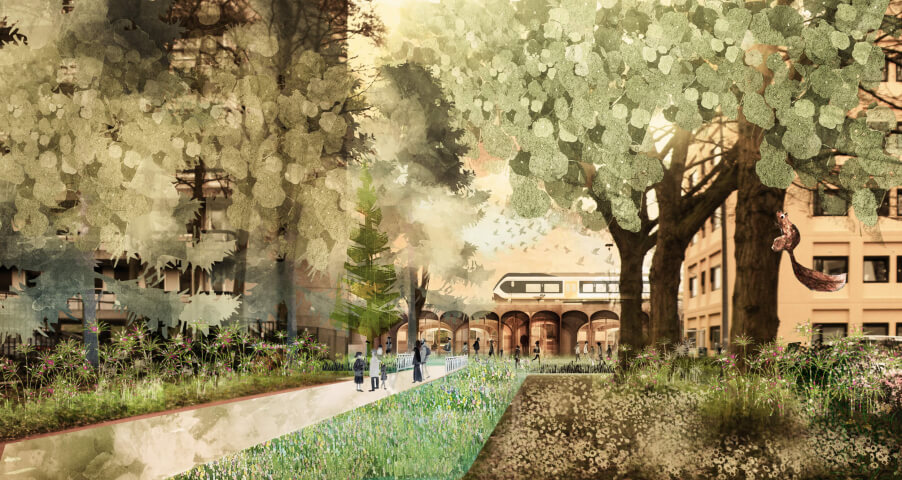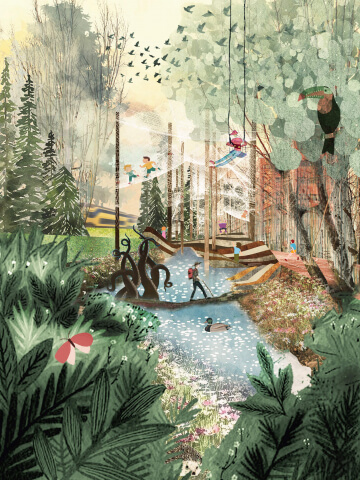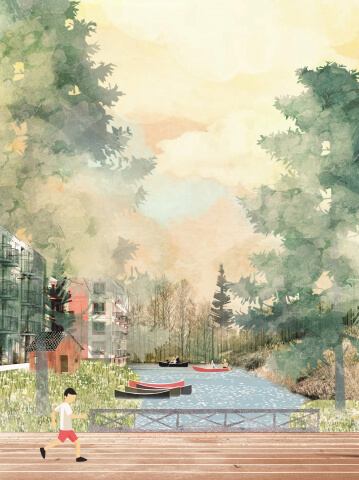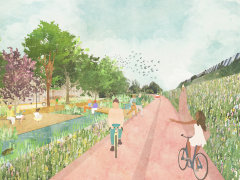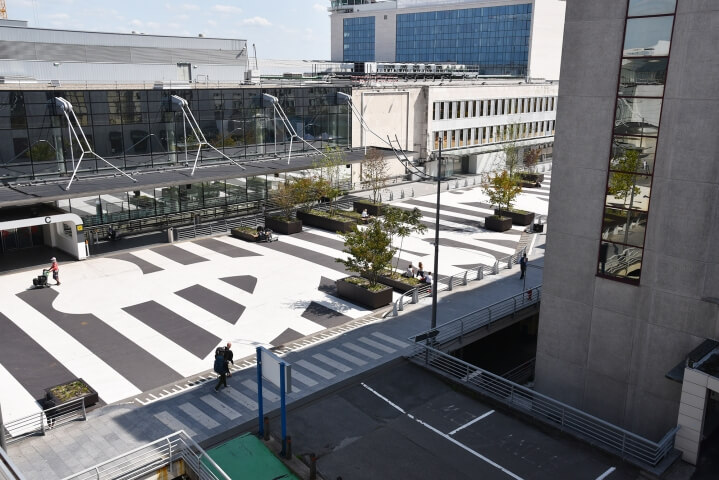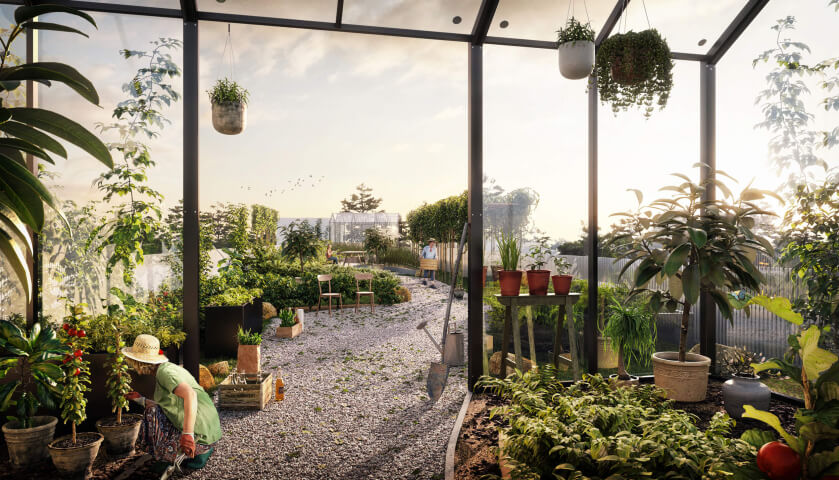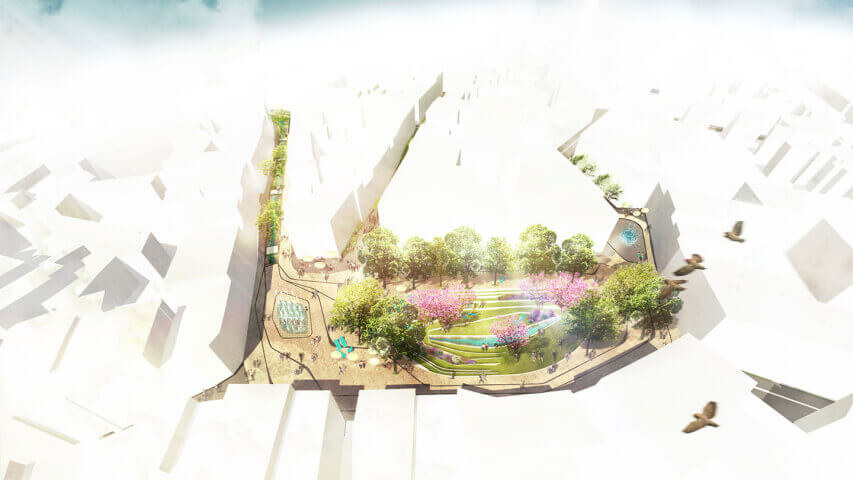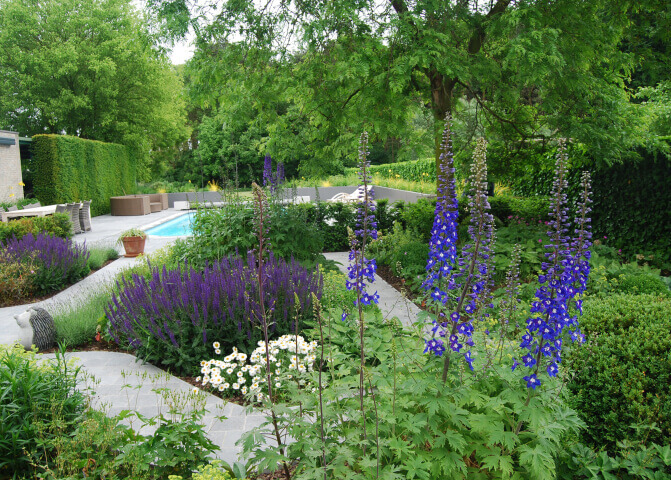Healthy Tracks
Research by Design for the Amsterdam Zuidoost Railway
Amsterdam Zuidoost is divided by the railway zone between the neighborhoods Bullewijk and Amstel III. The raised railway served as the basis for the area, but now the municipality has the ambition to transform it into a spine that positively contributes to the identity of the area with an attractive effect between both sides of the track. In order to achieve this, the municipality of Amsterdam approached the O-team, established by the Ministry of Interior, to help them. The goal is to continue decision making through design research carried out by three external agencies, together with the multidisciplinary insight of the O-team.
Felixx’ design focused on the theme of ‘Safety and Health’, two major themes for human wellbeing. Since most of our cities worldwide are getting denser, the search for new tools to implement Health and Safety is becoming most relevant for those professionals in charge of shaping the livability of our cities. Health enhancement is not only based on the prevention of certain diseases, but is also heavily based on proactively generating conditions to enhance it. Health could be described as a balance between the resiliency of our inner ecosystem and the qualities of the outer ecosystem in which human life is developed. The role of the outer ecosystem for health improvement is becoming a major topic for urban planners, urban designers, and landscape architects. Safety is one of the fundamental psychological human needs. Nowadays traditional safety problems are reinforced with high-speed social transformation and urbanization, which raises the need for understanding safety and health as vital urban infrastructures.
The research is translated into three public space models for the railway zone: the multi-loop, the park and the icon. Each model has a different set of qualities, stakeholder participation and scale of influence, and addresses health and safety from its own perspective. The purpose is to envision how health and safety improvement strategies can generate multifunctional public space, and to show how to address these themes from our professional perspective in exemplary models. Health and safety should not be a particular characteristic of one critical spot, but should be understood as equally as important as other vital infrastructures of our cities.
The multi-loop
The multi-loop model for the railway zone recognizes the potential of all sources of health from the surrounding area by connecting them in a coherent structure and by strengthening their identity by making them more accessible. The multi-loop is divided into four thematic loops: the eco-loop, the active loop, the fun loop and the blue loop. Within al proposed loops, the railway zone becomes an integral part of the potential health and safety corridors of Amsterdam Zuidoost.
The eco-loop proposes 17 km of recreational and ecological routes connecting the richness of the landscape for the citizens and biodiversity in the area. The railway zone acts as a recreational amenity within an ecological framework.
The active loop proposes a double sports track to practice physical activity on a daily basis. The track is car-free and runs under the coverage of the main tree structures of the area. Two different length routes divide the network, while at the same time connecting the main sports facilities of the area. The railway zone serves as a collective sports area programmed with new alternatives for physical activity.
The fun loop organizes a safe and healthy tour for children. The loop is defined by thematic activities connected with educational and medical institutions. The playgrounds of the area are not just understood as regular objects but as an attractive route and learning experience. The railway zone adds fun to the route by using the slope, the trees and the water along the railway and by turning them into a series of islands, cliffs and bridges to cross and jump over.
The blue loop proposes 8km of suitable waterway to practice kayaking through Bijlmermeer Polder by reinterpreting the current open water system, enlarging the water profile, and by placing new small bridges. The route cannot be hydrologically connected to Bullewijk but can visually create a blue walk through the area and create a circular water purification system. The railway zone becomes the starting point of the loop and locates some specific spots to motivate activity in the water.
The park
The park model for the railway zone proposes to turn the space on both sides of the railway into an urban linear park. The park is envisioned with different qualities of existing green along Amsterdam Zuidoost and is positioned to create a new destination where current and planned local streets will converge onto a new front side. The limits of the park are extended vertically onto facades and roofs of adjacent buildings where existing and future buildings could be oriented towards the park. The model uses the existing water canal as the leading structure for the park. The park widens the canal section, makes the water more accessible and programs the water with new urban functions.
The park increases the permeability and transparency on both sides of the railway by transforming existing tunnels into a continuous indoor plaza with a new program: markets, art spaces, temporal activities and skate parks, physically connected with the metro station. It would bring a destination and identity to the railway zone by turning a prevailing feeling of obscurity into something special and safe.
The Icon
The icon model for the railway zone proposes turning the railway into a health and safety destination not just for the district but for the city. The icon is designed as a bridge over the road and railway, which is pedestrianized and connects both sides of the railway. It is programmed with many public amenities, both indoor and outdoor. All healthy functions will be concentrated on the bridge as a big generator of health, which at the same time will extend the use in time throughout the day beyond office time and contribute to the overall feeling of safety of the surrounding area. The bridge construction of different slopes could offer new programs adapted to the bridge structure: urban farming in terraces, climbing walls, artificial creek kayak descents, a big amphitheater, in- and outdoor gyms, sports retail, offices and a direct connection from the station to the roof of the bridge. The icon will function as a generator of safety and health. It would be a destination for the area and for the city.
The three design elaborations should be seen as scenario studies in which health and safety as a design driver have resulted in specific design principles on different scales. These design principles will inform the potential and the future role of the railway zone by acting as a toolbox where health and safety can be addressed differently and can create the context for different spatial qualities.
Jaar
2018 - 2019
Locatie
Amsterdam, The Netherlands
Team & partners
Michiel Van Driessche
Marnix Vink
Deborah Lambert
Eduardo Marin Salinas
Elan Redekop van der Meulen
Thyra Bakker
PosadMaxwan
Studio L A


